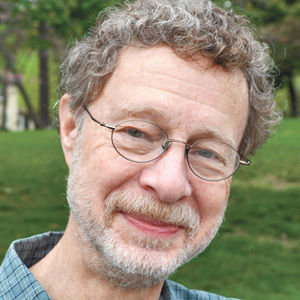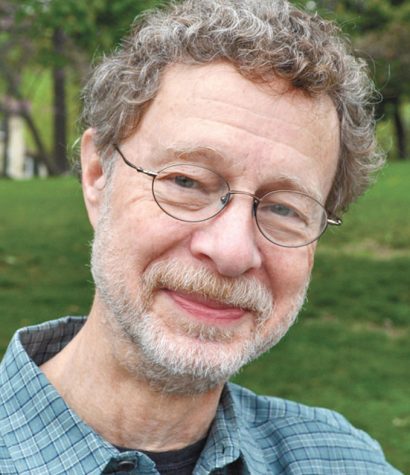We still don’t know what Mueller’s team found

Published April 4, 2019
The latest count of lies and misstatements made by President Donald Trump since he became president about two years ago stands at 9,179 as of March 17. In the first two months of 2019, he averaged 22 false or misleading claims per day, a 33 percent increase over 2018, according to the Washington Post’s authoritative Fact Checker database.
So maybe I should have been expecting it, but I still was startled when lies were the first public words out of Trump’s mouth after Special Counsel Robert Mueller submitted to Attorney General William Barr a 400-page report on the 22-month investigation Mueller oversaw into Russian interference with the U.S. presidential election of 2016 and possible participation in that interference by Americans.
It was March 24. With Air Force One waiting nearby on the runway tarmac, Trump climbed out of a limo and spoke to reporters before flying back to Washington from Palm Beach, Fla.
“So after a long look,” Trump said of Mueller’s report, “it was just announced there was no collusion with Russia. … There was no obstruction, and none whatsoever, and it was a complete and total exoneration.”
No, it wasn’t.
Trump’s fantasy-laced characterization of Mueller’s report presumably was based on a four-page letter Barr had sent earlier that day to the senior Republican and senior Democrat on the House and Senate Judiciary committees. Barr also released the letter to the public.
Long before that letter appeared, of course, tough investigative work by journalists at serious news organizations, court filings by the Mueller team, and guilty pleas by such Trump associates as Michael Flynn, Michael Cohen, George Papadopoulos and others already had demonstrated a considerable amount of contact between conniving Russians and Trump campaign figures. The Russians had offered campaign assistance of various kinds, including access to stolen information and data, and campaign operatives had expressed interest.
But the mission of Special Counsel Mueller’s investigations, operating under standards for criminal prosecutions set by Title 9 of the Justice Manual of the U.S. Department of Justice, was to pursue legal truths, not just reportable information.
In that context, the question wasn’t whether there had been contact between the two sides. The question was whether the specific facts of interactions between campaign operatives and Russian middlemen, as seedy as they might have been, amounted to evidence of conspiracy or coordination, which are illegal. And if so, was the nature of the evidence so compelling that it was likely to convince 12 jurors of guilt “beyond a reasonable doubt” on all charges, the demanding standard specified by Section 27.220 of Title 9?
Barr’s letter, quoting directly from Mueller’s report, relayed the special counsel’s broad answer: “[T]he investigation did not establish that members of the Trump Campaign conspired or coordinated with the Russian government in its election interference activities.”
But what did the investigation establish? It’s impossible to know, because Barr has not yet made the complete Mueller report, or a censored version thereof, available for public review.
It’s possible, of course, that Mueller’s all-star team of 19 lawyers and 40 FBI agents, intelligence analysts, accountants and other professionals worked for two years and turned up no evidence at all of criminal conspiracy or coordination. But you’d think that “witch hunts” and “hoaxes” perpetrated by a secret, deep-state cabal wielding the limitless power of government against the defenseless Donald Trump — as the president repeatedly has described the imaginary forces arrayed against him — would do better than that.
It’s also conceivable that Mueller’s team developed plenty of evidence but felt it wouldn’t meet the “beyond a reasonable doubt” standard in court or that the case fell short of some of the many other prosecutorial requirements spelled out in Title 9.
In the absence of Mueller’s complete report, we simply do not know why Mueller decided against bringing additional charges in connection with the extensive Russian interference with the U.S. presidential election of 2016. And neither does the president.
Another of Mueller’s responsibilities as special counsel was investigating the possibility that some of Trump’s actions crossed the legal line into criminal obstruction of the investigation into Russian interference in the U.S. election.
There was good reason to wonder about it. On May 9, 2017, for example, Trump fired FBI Director James Comey, who was then in charge of the Russian-interference investigation. The next day, Trump invited the Russian Federation’s foreign minister and its ambassador to the Oval Office and told them that he got rid of Comey to relieve the pressure he was feeling from the Russia investigation. The day after that, Trump said essentially the same thing in an interview with “NBC Nightly News” anchor Lester Holt.
Other actions and statements by the president after Mueller became special counsel and took over the investigations have raised similar concerns.
Barr’s letter to the House and Senate judiciary committees said that Mueller investigated these matters thoroughly and that the special counsel’s report includes discussions of differing interpretations of relevant questions of law and fact raised by each of Trump’s potentially obstructive actions. In the end, Mueller chose to withhold judgment on whether these and other Trump actions qualified as obstruction.
In doing so, however, Mueller made a point of stating that “while this report does not conclude that the President committed a crime, it also does not exonerate him.”
The words “does not exonerate him” expose the lie in Trump’s invented claim that Mueller’s report found no obstruction and was a total exoneration.
Even based on the slender thread of information we have now, we know Mueller’s report said no such thing.
Yet Barr refused to leave it at that. Mueller’s decision to withhold judgment, Barr asserted, “leaves it to the attorney general [i.e. Barr] to determine” whether Trump obstructed justice. Barr fails to offer any reasoning or principle to justify why the judgment of the special counsel should not represent the official finding of the special counsel’s investigation. A special counsel was appointed, after all, to protect the investigation from distortion or manipulation by political forces.
Instead, Barr simply sets aside Mueller’s position and declares that he and Deputy Attorney General Rod Rosenstein have agreed that Trump did not obstruct justice.
One final peculiarity: The FBI investigation into Russia’s interference in the U.S. presidential election of 2016 is or was — its current status is unclear — primarily a counterintelligence investigation, a search for truth focused not so much on developing and prosecuting crimes as learning as much as possible about what the Russians did, how they did it, how similar attacks can be prevented and U.S. interests protected in the future and how to develop new intelligence sources for acquiring secret information.
It’s curious that Barr’s letter about Mueller’s report on his investigations as special counsel makes no reference to the counterintelligence mission that was the reason these investigations were opened in the first place.
Indeed, the word “counterintelligence” does not even appear in Barr’s letter.
Eric Mink is a freelance writer and editor and teaches film studies at Webster University. He is a former columnist for the St. Louis Post-Dispatch and the Daily News in New York. Contact him at [email protected].















